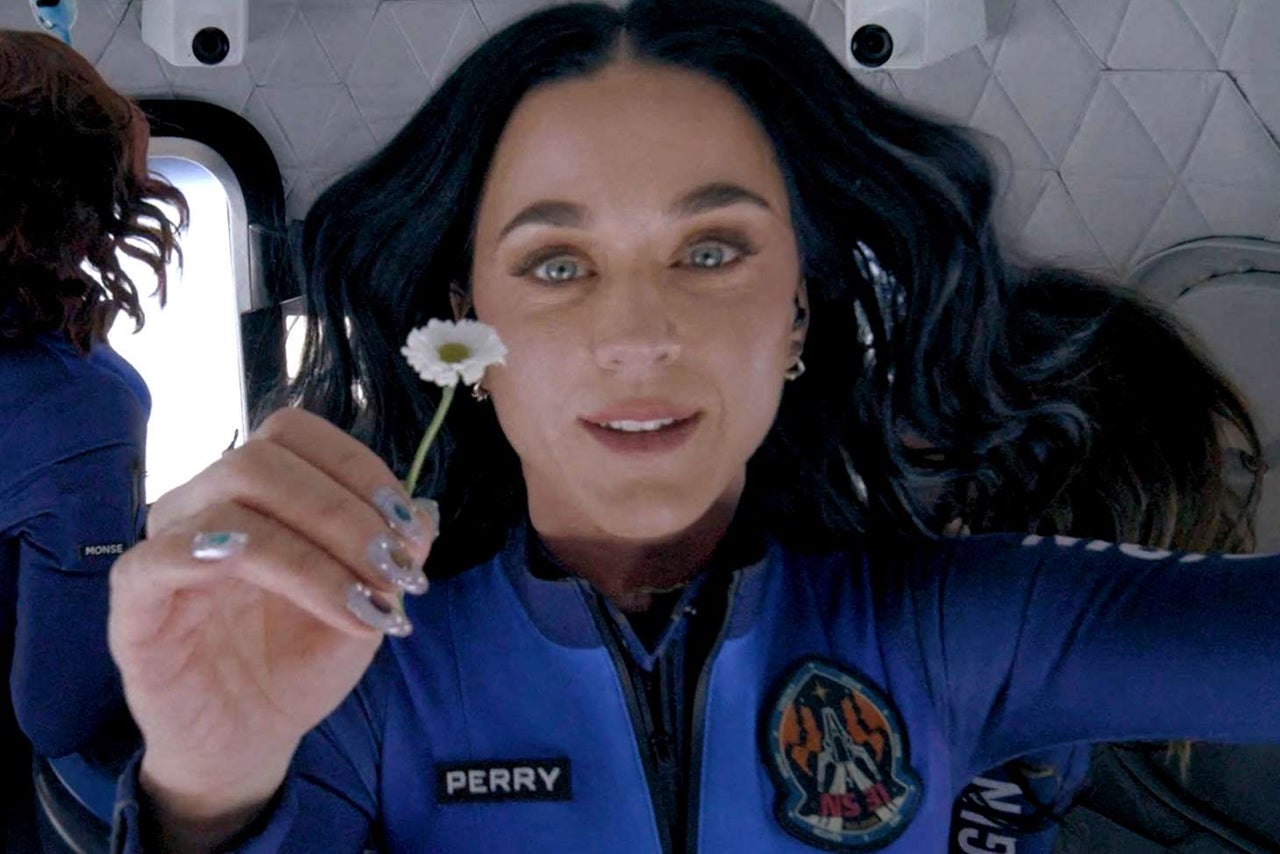A recent spaceflight conducted by Blue Origin, featuring Katy Perry, Gayle King, and Lauren Sánchez, has sparked significant public criticism. Despite being marketed as a groundbreaking all-female mission, the flight lasted a mere 11 minutes—highlighting a stark contrast between the event’s lofty rhetoric and its underwhelming reality.

The mission, though brief, was heavily publicized and followed by a live broadcast. For many viewers, however, the actual experience appeared to fall short of its anticipated grandeur. Katy Perry’s theatrical return—kneeling to kiss the ground as though completing a heroic journey—was widely viewed as excessive, given the flight’s short duration and commercial nature.
Perry used the opportunity to promote her upcoming concert tour, displaying a butterfly-shaped set list during the flight, although the details were not visible to viewers. She also performed “What a Wonderful World” for her fellow passengers, a gesture met with mixed reactions. While some found it charming, others felt it further blurred the line between earnest exploration and self-promotion.
Lauren Sánchez, who spearheaded the mission alongside her partner Jeff Bezos, emerged as a central figure upon landing. Their reunion was marked by a display of personal affection, and Sánchez later reflected on the experience, stating, “We’re all in this together.” This sentiment, however, was met with skepticism by many observers who noted the exclusivity and privilege underpinning the venture.
Several high-profile individuals were present to witness the launch, including Oprah Winfrey, members of the Kardashian family, and actor Orlando Bloom, who attended with Daisy, his daughter with Perry. Symbolic gestures—such as Perry carrying a daisy in her daughter’s honor and Sánchez bringing a plush toy inspired by her children’s book—underscored the flight’s personal and promotional overtones.
The event drew comparisons to reality television, particularly shows like Selling Sunset, in which glamorous appearances and grand gestures often eclipse substance. The image of the crew ringing a ceremonial bell before boarding was noted as resembling the celebratory customs of the entertainment industry more than those of scientific or exploratory missions.
Critics have questioned the mission’s broader significance, especially in relation to women’s representation in STEM. While the flight was marketed as a milestone for female achievement in space, many argue it lacked the depth or impact needed to inspire meaningful progress in scientific fields.
Public response has been largely unfavorable, even among those previously supportive of the figures involved. The use of space travel as a platform for celebrity branding—particularly in a time marked by social, economic, and environmental challenges—has struck many as tone-deaf. Efforts to frame the mission as a feminist statement were also met with widespread skepticism.
Ultimately, the flight may be remembered not for advancing space exploration, but for embodying the growing critique of how wealth and spectacle can co-opt even the most aspirational endeavors. Rather than a triumph, many have labeled it a missed opportunity—one that serves more as a commentary on privilege than on progress.
